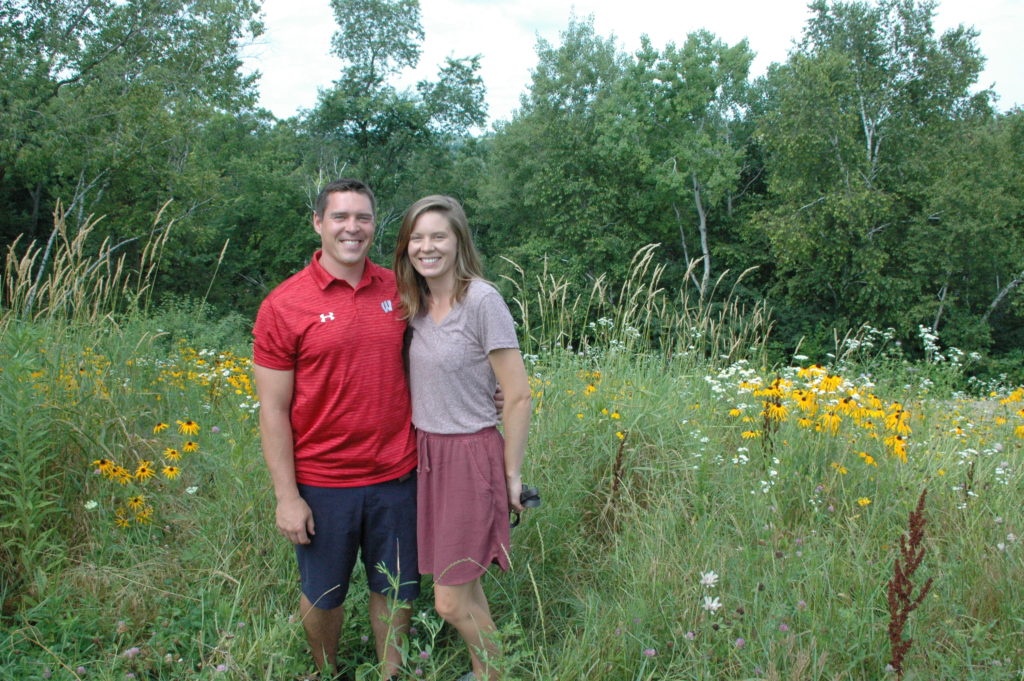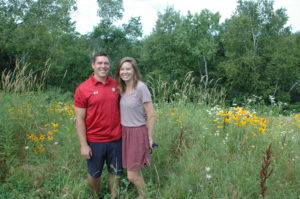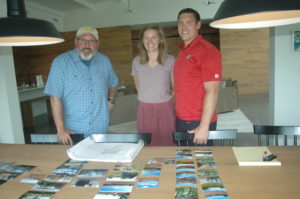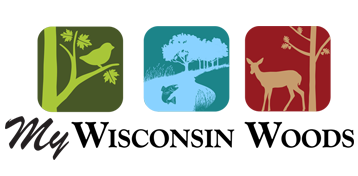
Badgers Defensive Coach Plays Offense on Woods
A successful woodland owner has a good offense and a good defense.
On offense, take the initiative to do something! Consider what you’d like the woodland to look like in the future, obtain advice from knowledgeable people and then take a first step to manage the land.

A good defense aggressively blocks threats such as invasive species from invading woodlands.
In many cases, the problem is that the average landowner is not sure what to tackle first.
Through inaction, landowners have essentially “made decisions” to let the land decide. That often results in a forest full of buckthorn, honeysuckle, and maples but few oaks.
Jim and Katie Leonhard, of Cross Plains, consider themselves very average woodland owners. They own 27 acres in western Dane County and had no experience owning woodland.
But they are exceptional in that they have taken steps to learn about land management through the My Wisconsin Woods Program of the Aldo Leopold Foundation.
They also happen to have been exceptional athletes, Jim, from Tony, is in the UW-Madison Athletic Hall of Fame and now serves as the defensive coordinator of the University of Wisconsin Badgers football team. He played professional football for 10 years with the New York Jets, Denver Broncos, Buffalo Bills, and Baltimore Ravens.
Katie, from Roswell, Ga., was a member of the UW-Madison women’s crew team.
“When we first saw the land, we knew it was pretty and special, but we thought it was too much to take on,” Katie said. “It was totally engulfed with buckthorn.”
Katie admits to falling in love with a large bur oak she wanted to preserve on the acreage. They bought the property, about half wooded and half prairie, in 2012. The woodland includes white, red and bur oak, shagbark hickory, and unique rock outcroppings, along with openings of remnant prairie.
In planning for their home, their architect, Andy Fieber, referred them to the Aldo Leopold Foundation. The foundation staff had ideas of how to site the house so that it fit into the property without damaging it.
Their management efforts began with the removal of buckthorn (a continuing effort), and they have had several controlled burns to invigorate native prairie species.
“We feel like we are trying to control our property five feet at a time,” Jim said. “We were clueless going into this and every time we learn a little more.”
The first step
An important step for any landowner is walking the land with someone who has a background in land management.

The Leonhards walked with Steve Swenson, Aldo Leopold Foundation’s conservation director, and gained insight to its possibilities.
“When you walk with different experts, they all see something different,” Jim said. “We knew it was special but we didn’t know why. They helped us understand what it was like before and what it could be.
“It gets you so excited about the property because you see how the professionals see the property differently and it re-energizes you,” Jim said.
It also involves the family, as their oldest son, Reese, 7, gets excited and reports to his parents when he sees his first pasque flower in bloom each spring.
The Leonhards enjoy having groups of people out to the property. They find it encourages others to develop an interest in managing their own land.
“Sometimes we feel like novices and are not sure what the next steps will be, but then we are lucky to have amazing people we can reach out to. You don’t have to have all the answers yourself, but be willing to do some research and to reach out to people,” Jim said.
Buddy Huffaker, Aldo Leopold Foundation executive director, said it’s been fun to watch the Leonhards come out to the Leopold Center to learn about prairie ecology and bring their boys to watch sandhill cranes glide into roost on the Wisconsin River.
“Each time they do a burn on their prairie they invite family and friends to learn about prescribed burning,” Huffaker said. “That is their spirit of the endeavor, which is learning more about their property, how to take care of it, and sharing it with friends and family.”
This article was originally featured in Wisconsin Outdoor News and was written by freelance journalist Tim Eisele. Photos provided by Tim Eisele. For more of Tim’s work visit his website or subscribe to Wisconsin Outdoor News.
